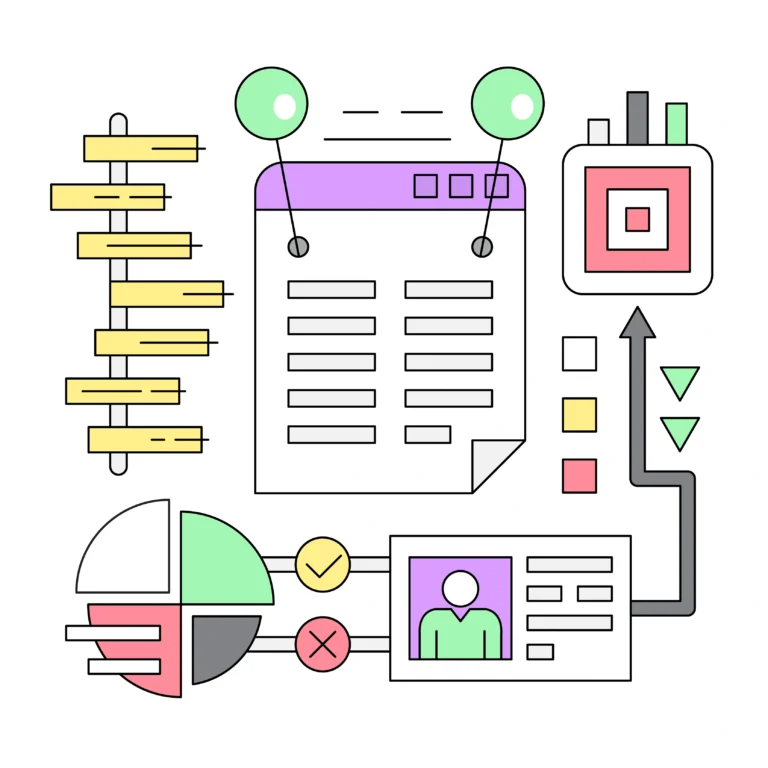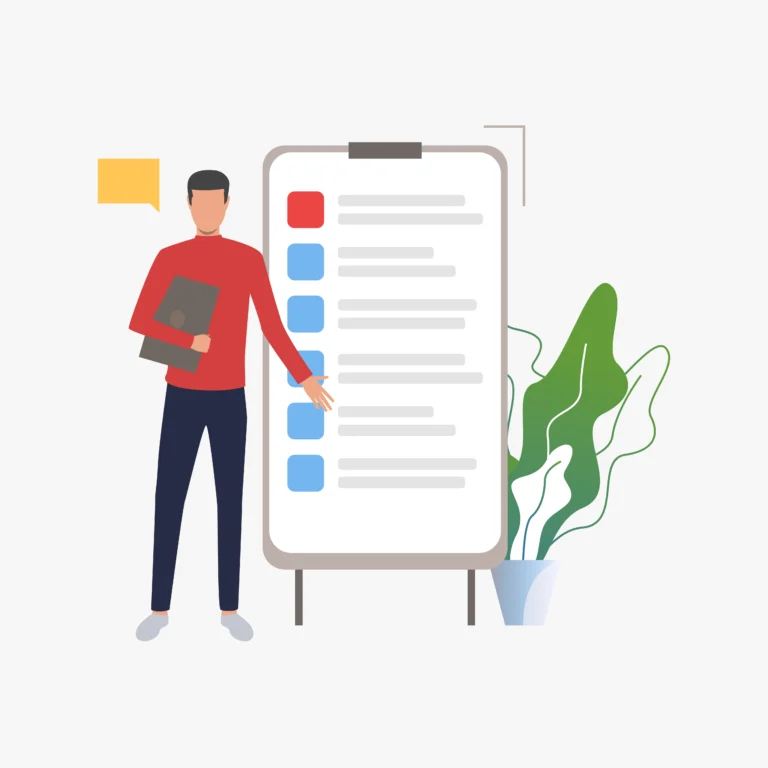Powerful Tricks to Create an ATS-Friendly Resume That Instantly Boosts Interview Calls 5x
This post may contain affiliate links. At no extra cost to you, I may earn a small commission if you make a purchase. Read full disclosure »
Introduction: Why ATS-Friendly Resumes Matter More Than Ever in 2025?
In a world where nearly 98% of Fortune 500 companies use Applicant Tracking Systems (ATS) to screen resumes, your resume isn’t just for recruiters anymore—it’s for robots, too. If your resume can’t speak the language of ATS software, it won’t get past the first filter.
Gone are the days when a beautiful layout or clever design guaranteed attention. Today, an ATS-friendly resume determines whether your application is even seen by a human.
If you’re struggling to get noticed by employers, this guide on how to create an ATS-friendly resume that lands interviews will show you exactly what it takes to pass automated filters and impress hiring managers.
Let me be clear: This isn’t about gaming the system. It’s about aligning your strengths with the way modern recruiting works. By the end of this guide, you’ll know exactly how to structure, write, and optimize your resume for both machines and people—and position yourself to land interviews faster.
What Is an ATS-Friendly Resume?
An ATS-friendly resume is a document specifically optimized to pass through resume-scanning software. These systems are designed to scan, parse, and rank resumes based on relevance to a job description. If your resume lacks the right keywords or is structured poorly, it could be rejected automatically—no matter how qualified you are.
Why This Matters in 2025?
Recruiters receive hundreds of resumes per job posting. To manage this, ATS software quickly filters out unqualified candidates. But here’s the catch: even qualified applicants are filtered out if their resumes aren’t formatted correctly or fail to use relevant keywords.
That’s why creating an ATS-friendly resume format in 2025 is essential—it’s your ticket through the automated gatekeeping process and into the shortlist.
What This Guide Covers?
In this ultimate guide, you’ll learn:
- How to optimize your resume for ATS software
- Examples of ATS-compliant resumes that recruiters love
- The most important keywords to use in an ATS-friendly resume
- Common resume mistakes to avoid in 2025
- Tips, templates, and formatting tools for success
- Personal insights and real-world strategies that work
How ATS Software Works (And Why Most Resumes Fail)?
What Is an Applicant Tracking System (ATS)?
An Applicant Tracking System is software used by employers to filter, rank, and organize job applications. It scans your resume for keywords, formatting, and relevance, comparing it against the job description before a human ever lays eyes on it.
Think of it as a digital gatekeeper. If your resume isn’t optimized, it might be dismissed in seconds—even if you’re the perfect candidate.
What Does an ATS Look For?
Here’s what most ATS software scans for:
- Standardized section headers: Experience, Skills, Education, etc.
- Exact keyword matches from the job description
- Consistent formatting (no tables, graphics, or columns)
- Document type: .docx or PDF (when allowed)
Most systems don’t read:
- Text in headers/footers
- Fancy fonts or symbols
- Charts or embedded images
That’s why an ATS-friendly resume format in 2025 focuses on clarity over creativity. A clean layout helps machines parse your data correctly—and ranking high in the system means a recruiter might actually read your resume.
The #1 Reason Resumes Fail ATS Scans
It’s not lack of experience. It’s lack of alignment.
Many candidates submit a generic resume to every job. But ATS software expects resumes to be tailored. It’s designed to reward those who closely match the job description.
Here’s what happens when you don’t tailor:
- Keywords don’t match → low ranking
- Wrong format → content unreadable
- Overuse of graphics → system errors
Your resume may be brilliant—but if it’s unreadable to ATS, you’re invisible.
🔍 Tip: Run your resume through a free ATS resume checker online to spot formatting or keyword issues before applying.

An ATS-Friendly Resume opens the door,
Before your feet reach the interview floor.
Format it smart, with words that align,
And let your career story truly shine.
Real-World Example: A Tale of Two Resumes
Let’s say two candidates apply for the same marketing analyst role:
Candidate A uses a stylized Canva template, includes charts, and submits in PNG format.
Candidate B uses a simple .docx resume, with headings like “Experience” and keywords like “data analysis,” “campaign ROI,” and “Google Analytics.”
Who gets the interview?
Despite being equally qualified, Candidate B wins—because their resume is readable and relevant to the ATS.
My Personal Take: Why You Shouldn’t Rely on Templates Alone
I’ve seen hundreds of resumes that look stunning—but never make it to a recruiter’s inbox. Why? They weren’t ATS-compliant.
Templates are a starting point, not a solution. Always adapt them for functionality. Simplicity + keywords = results.
Want a Resume That Grabs Attention Instantly?
👉 Don’t miss our complete guide: 5 Essential Secrets to Crafting the Perfect Resume Structure with Winning Sections & Formatting Tips — Master structure, sections, and formatting like a pro!
Choosing the Right Keywords to Use in an ATS-Friendly Resume
Why Keywords Are Everything?
The ATS is programmed to scan for keywords—and not just any words, but the exact phrases used in the job description. Think of it like SEO for your resume: no relevant keywords = no visibility.
But keyword stuffing won’t help either. The key is to weave them in naturally throughout your resume—especially in your skills section, job titles, bullet points, and summary.
Where to Find the Right Keywords?
Start with the job listing. Look at:
- Job titles
- Required qualifications
- Skills and responsibilities
- Industry-specific tools or technologies
Use free tools like:
- LinkedIn job descriptions for keyword trends
- Free ATS resume checker online tools for suggestions
How to Use Keywords in Each Section?
Professional Summary
“Detail-oriented business analyst with 5+ years of experience in data visualization, project coordination, and using Tableau to drive decisions in a cross-functional team.”
Experience Section
“Led a cross-departmental initiative to optimize content strategy, increasing SEO traffic by 45% in 6 months.”
Skills Section
List 8–12 skills using both soft and hard skills—formatted as text, not as visuals.
Certifications & Projects
Mention tools, platforms, and frameworks that recruiters search for.
Common Keyword Mistakes to Avoid
❌ Keyword Stuffing: “ATS-friendly resume, ATS-friendly resume format, ATS resume template, resume ATS.”
✅ Instead: “Create an ATS-friendly resume by using clean formatting, targeted keywords, and the best resume templates for ATS systems.”
❌ Irrelevant Keywords: Using words that aren’t in the job post or industry.
❌ Passive Language: Weak words like “helped with,” “was part of”—they don’t convey impact.
Real Insight: Keyword Match Doesn’t Mean Copy-Paste
Don’t just copy the job description word-for-word into your resume. That triggers red flags. Instead, mirror the language while adding your personal impact.
Example: Instead of “responsible for managing social media,” say:
“Managed multi-platform content campaigns that boosted engagement by 32%.”
This still uses keywords like “content,” “campaigns,” and “engagement,” but shows results.
Be sure to check out The #1 Ultimate Guide to an ATS Friendly Cover Letter for Job Application: Write the Sections That Make You Stand Out in 2025 to level up your keyword game with real examples and expert tricks.
How to Tailor Your ATS-Friendly Resume for Every Job (Without Starting From Scratch)?
One Size Doesn’t Fit All—Especially for the ATS
The biggest mistake job seekers make is submitting the same resume to every role. Even if it’s perfectly formatted, a generic resume won’t perform well in an ATS scan. Why? Because each job posting uses different keywords, role priorities, and language nuances.
The goal is to customize strategically, not rewrite from scratch.
The 5-Minute Tailoring Framework
Here’s a simple, repeatable method I use when tailoring resumes:
Step 1: Analyze the Job Description
- Highlight required skills, certifications, software tools, and soft skills.
- Look for repeated keywords (e.g., “client communication,” “data analysis”).
Step 2: Match the Title and Career Goal
Your resume’s career goal should reflect the job title.
Instead of:
“Marketing Graduate seeking full-time opportunity.”
Try:
“Aspiring Digital Marketing Specialist eager to grow brand engagement through data-driven strategies.”
Step 3: Adjust Your Professional Summary
In 2–4 lines, echo their top 3 role requirements. Use phrasing that matches theirs—but frame it as your unique value.
Step 4: Reorder and Refocus Skills
Put the most relevant skills at the top. Remove unrelated tools. ATS systems often rank your resume based on keyword density and placement.
Step 5: Update Experience Bullet Points
Customize 2–3 bullet points per job to reflect what this company wants.
Example: If the job wants “team leadership”, rewrite your bullet from:
“Managed interns during product rollout.” →
“Led and coached a team of interns to deliver product launch 2 weeks ahead of schedule.”
Personal Insight: The Tailoring That Got Me Hired
When I applied to a content strategist role, I had to compete with dozens of applicants with more experience. But I tailored my resume to match their exact job phrasing—“cross-functional collaboration,” “editorial calendars,” “SEO optimization.”
Result? I got an interview within 48 hours. The hiring manager later told me my resume was “the clearest match” in the system. That’s the power of targeted keyword integration in an ATS-friendly resume.

Use a Master Resume as Your Base
Maintain a “master resume” with all your roles, projects, skills, and metrics. Then, copy it into a new document and tweak the most relevant parts for each application. This saves time and ensures consistency.
Need help building your base? Start with 5 Essential Secrets to Crafting the Perfect Resume Structure with Winning Sections & Formatting Tips for guidance on layout, sections, and formatting that passes ATS filters with ease.
Integrating Online Presence Into an ATS-Friendly Resume
Why Your Online Presence Matters in 2025?
Even after passing the ATS, your resume isn’t the only place recruiters look. Nine out of ten employers check your LinkedIn profile, portfolio, or personal website before calling you for an interview. So, while the ATS scans your resume, recruiters scan your online presence—and it needs to align.
A powerful resume opens the door; your digital profile convinces them to walk in.
Where to Include Online Links in an ATS-Friendly Resume?
✅ Place your digital links in the header, alongside your contact info:
- LinkedIn (must be updated!)
- Portfolio website (especially for designers, marketers, writers)
- GitHub (for tech, dev, data roles)
- Medium or Substack (if you write thought leadership content)
🛑 Do NOT hyperlink meaningless anchor text like “click here”—write out full URLs or use descriptive phrases (ATS can misread or ignore hyperlinks).
Example:
LinkedIn: linkedin.com/in/jordan-thomas-content
Portfolio: jordanthomaswrites.com
How to Align Your Resume with Your LinkedIn?
Consistency builds credibility.
✔️ Ensure:
- Your job titles, dates, and accomplishments match
- Your LinkedIn headline reflects the same career goal as your resume
- Your profile summary tells the same story—just more conversational
- You have at least 5–10 endorsements for your core skills
💡 Pro Tip: Use your resume summary as a starting point for writing your LinkedIn “About” section. Then expand with a more personal tone and examples.
Online Presence = Bonus ATS Proof
While the ATS doesn’t scan your online profiles, recruiters often copy-paste your LinkedIn or GitHub into their CRM systems to evaluate cultural fit, endorsements, and thought leadership.
Showing relevant certifications (like Google Ads, HubSpot Academy, Salesforce Trailhead) on your LinkedIn profile reinforces your ATS-friendly resume keywords—and proves they weren’t just filler.
Personal Insight: The Resume That Got Me a Cold Message on LinkedIn
After adding a case study section to my portfolio and linking it in my resume, I received a cold message from a recruiter within a week. She said:
“I found your resume in our system, but it was your portfolio that sold me. I could see your thinking in action.”
Moral of the story? Your resume starts the conversation, but your online presence closes the loop.
Want to level up your resume? Check out 27 Essential Advanced Resume Writing Tips 2025: Strategies to Showcase Skills, Achievements & Personality.
Conclusion: Mastering the ATS-Friendly Resume in 2025
In today’s digital-first hiring landscape, your resume is more than a document—it’s your professional algorithm. If it isn’t ATS-friendly, it won’t get seen. And if it isn’t human-friendly, it won’t get remembered.
Creating an ATS-friendly resume is about mastering both audiences:
🧠 Machines that scan for relevance, and
🧍 Humans that search for personality, potential, and performance.
You don’t need to over-design or start from scratch for every job. Instead, strategically format, customize, and optimize your resume with the right keywords, layout, and tone—and update your online presence to reinforce your value.
Summary: Key Takeaways to Remember
Creating an ATS-friendly resume in 2025 isn’t just about formatting—it’s about strategy. Applicant Tracking Systems (ATS) are designed to scan, score, and sort resumes based on relevance and structure. To rise above the digital noise and land in front of a human recruiter, your resume must meet technical standards while showcasing your unique value. Below are the key takeaways to help you build a resume that passes ATS filters and impresses hiring managers.
- Use a .docx or ATS-safe PDF with a clean, single-column layout.
- Follow the ATS-friendly resume format 2025: Header, Career Goal, Skills, Experience, Education, Certifications.
- Integrate keywords to use in an ATS-friendly resume based on job descriptions.
- Tailor each resume by aligning your career goal, summary, and experience with the job posting.
- Avoid ATS-killing mistakes: no graphics, tables, or irrelevant templates.
- Link to your LinkedIn, GitHub, or portfolio—and ensure consistency across all platforms.
- Use tools or a free ATS resume checker online to improve your score.
- Make data and action your superpower: always quantify impact.
- Stick to 1% exact keyword density for “ATS-friendly resume” and sprinkle long-tail keywords naturally.
- Keep your resume human too—clear, confident, and personal.
Final Thought: Your First Interview Starts with a Scan
You don’t need a fancy resume to stand out in 2025. You need a functional, focused, and friction-free document—an ATS-Friendly Resume that guides both bots and recruiters to one conclusion:
“Let’s interview this person.”
So take that first step. Update your ATS-Friendly Resume. Align it with modern expectations. And unlock the opportunities waiting just beyond the scan.
Continue Learning
- 27 Essential Advanced Resume Writing Tips 2025: Strategies to Showcase Skills, Achievements & Personality
- The #1 Ultimate Guide to an ATS Friendly Cover Letter for Job Application: Write the Sections That Make You Stand Out in 2025






9 Comments